Chapter 19.30
SIGN CODE
Sections:
19.30.040 Public safety considerations.
19.30.060 General permit requirements.
19.30.070 General sign requirements.
19.30.080 Sign area calculation.
19.30.090 Historic-commercial district (HC zone).
19.30.100 General commercial, central commercial and industrial (GC, CC, LI) zone signs.
19.30.110 Neighborhood mixed-use (NMU) and high-density residential (HDR) zone signs.
19.30.120 Residential (R-6,000, R-8,000, R-20,000) zone signs.
19.30.130 Public facility zone (P) signs.
19.30.150 Nonconforming signs.
19.30.160 Maintenance and repair of legal nonconforming signs.
19.30.170 Maintenance of signs.
19.30.180 Application for design review.
19.30.190 Appeals from design review or designated official.
19.30.210 Planning director’s authority.
19.30.240 Recovery of removed signs.
19.30.250 Enforcement, violations and penalties.
19.30.260 Appeal from sign code administrative interpretations and decisions.
19.30.010 Purpose.
This chapter shall be known as the “sign code” and is being instituted to promote and protect the public health, welfare, and safety by regulating existing and proposed outdoor advertising, outdoor advertising signs, and outdoor signs of all types through a comprehensive system of reasonable, effective, consistent, content-neutral, and nondiscriminatory sign standards and requirements to the extent required by law. The intent of this chapter is to promote high-quality, creative signing in the city of Buckley to enhance and protect property values, create a more attractive economic and business climate, enhance and protect the physical appearance of the community, and preserve the scenic and natural beauty as well as the historical character of designated areas. It is further intended to reduce sign or advertising distraction and obstructions that may contribute to traffic accidents, reduce hazards that may be caused by signs overhanging or projecting over public rights-of-way, provide more open space, and curb the deterioration of the natural environment and enhance community development, while attempting to preserve the right of the individual to use their property as they choose. (Ord. 04-23 § 1, 2023).
19.30.020 Definitions.
As used in this chapter:
“Abandoned sign” means any sign that has been in place for more than a year located on property which is vacant for a period of six months or more. Excluded from the definition are permanent sign structures, permanent building plaques and cornerstones. Properties shall be considered vacant if they are undeveloped or where all structures located thereon are unoccupied. Buildings exclusively used for storage, other than buildings or portions leased or sold for that purpose, shall not be considered occupied.
“Animated sign” means any sign that includes action or motion (including those that flash or oscillate) or the illusion of action or motion, or color changes of all or any part of a sign face. Changing message center signs, searchlights, flags or banners, and revolving signs are excluded from this definition.
“Awning” means a shelter projecting from and supported by the exterior wall of a building, constructed of rigid or nonrigid materials on a supporting framework that may be retractable or nonretractable. See Figure 19.30.020-1. Also see “Canopy sign.”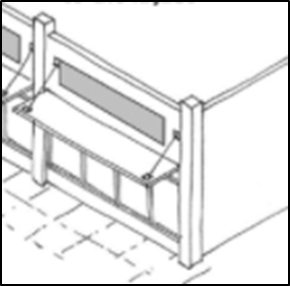
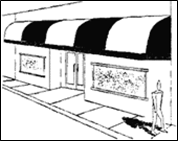
Figure 19.30.020-1 Typical Awnings
“Balloon sign” means any sign placed on or made part of a balloon or other air- or gas-filled object.
“Banner” means a flexible material (i.e., cloth, paper, vinyl, etc.) on which a sign is painted or printed.
Billboard. See definition of “Outdoor advertising sign.”
“Building-mounted sign” means a sign attached to any part of a building, as contrasted with a freestanding sign. Wall signs and printing on a canopy or awning are considered a building sign.
“Bulletin board” means any sign designed so that its message may be changed by removal or addition of letters that attach to the face of the sign. Marquees are excluded from this definition.
“Business complex” means any group of structures housing a number of separate retail businesses, offices, and/or commercial ventures which share the same site, access, and/or parking facilities.
“Business hours” shall be defined for the purpose of this chapter as those hours between 6:00 a.m. and 10:00 p.m. daily, Monday through Sunday, when the majority of commercial enterprises within the city conduct their primary business.
“Canopy sign” means any sign that is a part of or attached to an awning, canopy, or other fabric, plastic, or structural protective cover over a door, entrance, window, or outdoor service area. A marquee is not a canopy.
“Changing message center sign” means any electronically or electrically controlled sign where different automatic changing messages are shown on the same lampbank.
“Community service sign” means an informational sign of a noncommercial service nature erected by permit on public property. Permanent community service signs are meant to guide or direct pedestrian or vehicular traffic to permanent noncommercial uses and facilities, to points of interest and to mark the borders of general business districts (i.e., historic district, Rainier gateway, and SR 410 district as described in Chapter 19.50 BMC). Temporary community service signs include banners advertising community events and seasonal displays. Temporary community service signs shall be considered signs erected for 30 days or less and permanent community signs shall be considered signs erected for more than 30 days. These signs may be allowed within any zone subject to the following:
(a) Any such sign which is to be located within the right-of-way of a state highway shall be subject to approval by the Washington Department of Transportation.
(b) Limits. Permanent community service signs shall be located no closer together than every linear half mile. The total number of community service signs for one event, place or use shall not exceed three within city limits.
(c) Location. Any such sign shall not be placed where it may cause a hazard, or obstruct the vision of any driver, whether private drives or public rights-of-way.
(d) Size. Shall not be larger than four square feet of sign surface area except for banners advertising community events.
(e) Banners advertising community events shall be no larger than 30 square feet and shall be limited to the areas designated by city staff. Applications for permits to erect such banners shall be granted on a first-come, first-served basis without regard to content or viewpoint.
(f) Illumination. May be indirectly illuminated.
“Feather flag” sign means a temporary and portable sign made of lightweight materials that is prone to move in the wind, and that contains a harpoon-style pole or staff that is driven into the ground or supported by means of an individual stand.
“Flag” means a fabric sheet of square, rectangular or triangular shape which is mounted on a pole, cable, or rope at one end.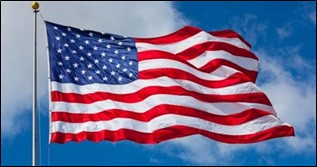
Figure 19.30.020-2 Typical Flag
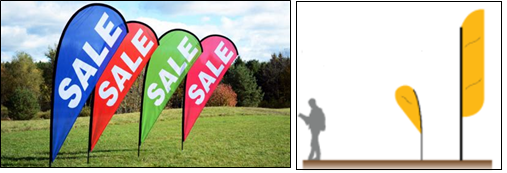
Figure 19.30.020-3 Typical Feather Flag Signs
“Flashing sign” means any electrified sign (or portion thereof) that changes light intensity in a sudden, transitory burst, or that switches on and off in a constant pattern in which more than one-third of the nonconstant light source is off at any one time. Changing message center signs are excluded from this definition.
“Freestanding sign” means any sign supported by one or more uprights, poles, or braces in or upon the ground, and being detached from any building or fence. Ground signs and flag signs are excluded from this definition. See Figure 19.30.020-4.
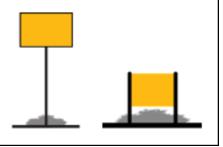
Figure 19.30.020-4 Typical Freestanding Signs
“Governmental sign” means any temporary or permanent sign erected and maintained by the city or any special purpose district, school district, county, state, or federal government or agency, including, without limitation, traffic signs, warning signs, informational signs, and signs displaying a public service message.
“Ground sign” means any freestanding sign not over 42 inches in height above grade.
“Height of sign” means, for a freestanding or monument sign, the vertical distance measured from the curb grade of the nearest street to the highest point of the sign or sign structure; and for a sign attached to a building, the vertical distance measured from the building grade to the highest point of the sign or structure.
“Historic wall sign” means a wall sign that is designed to emulate the old painted signs on some historic buildings in the city of Buckley. A historic wall sign consists exclusively of paint applied to the wall of a building without application of any other material or framing. The sign shall be composed exclusively of lettering, with background colors allowed for contrast and bordering. No pictorial displays are allowed, including but not limited to any depictions of products, logos, vistas, nature scenes, people, animals, inanimate objects of any kind, etc. See Figure 19.30.020-5.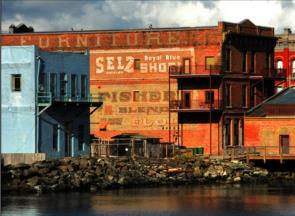
Figure 19.30.020-5 Historic wall sign
“Identification sign” means any flush-mounted, projecting, pole, monument or ground sign that identifies a multiple occupancy building or shopping center.
“Illegal sign” means a sign that does not meet the sign requirements of the sign regulations of this chapter and does not attain legal nonconforming status by operation of law.
“Illuminated sign” means any electrical sign that has lighted characters, letters, figures, designs, or outlines as part of the sign.
“Illumination, indirect” means lighting from an exterior source not directly visible from any public way.
“Illumination, internal” means lighting from within or behind a translucent surface.
“Incidental sign” means a small sign of a noncommercial nature having a maximum area of two square feet and not meant to be legible from the right-of-way or any thoroughfare for vehicular travel.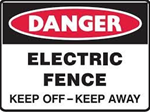
Figure 19.30.020-6 Typical Incidental Sign
“Legal nonconforming sign” means a sign which:
(a) On the effective date of the ordinance codified in this chapter, was lawfully maintained and had been lawfully erected in accordance with the provisions of any prior sign ordinance or code but does not conform to the applicable limitations established by this chapter; or
(b) On or after the effective date of the ordinance codified in this chapter, was lawfully maintained and erected in accordance with the provisions of this chapter but which sign, by reason of amendment of this chapter after the effective date thereof, does not conform to the applicable limitations established by the amendment of this chapter.
“Maintenance” means the cleaning, painting, and minor repair of a sign in a manner that does not alter the basic design or structure of the sign.
“Mansard roof” means any sloped roof or roof-like facade that may, for the purposes of this chapter, be treated as a wall.
“Marquee” means any permanent roof-like structure projecting beyond a building, generally designed and constructed to provide protection from the weather.
“Marquee sign” means any sign attached to and located under a marquee, except that a sign placed on the front of a marquee and parallel to the wall of the building to which the marquee is attached shall be considered to be a wall-mounted sign; and further provided, that a sign erected upon, but directly above, a marquee shall be considered to be a projecting sign.
“Monument sign” means a ground-supported single or multifaced sign attached to a solid base of landscape construction materials such as brick, stucco, stonework or textured concrete materials harmonious with the materials of the primary structure on the subject property and extending no higher than 12 feet. See Figure 19.30.020-7.
Figure 19.30.020-7 Typical Monument Signs
“Multiple occupancy building” means any single structure housing more than one retail business, office, or commercial venture.
“Neon sign” means any neon lighting used to draw attention to a business or building in any manner, including (but not limited to) informational, neon sign graphics, or logos.
“Nonbusiness hours,” for the purpose of this code, shall be defined as those hours between 10:00 p.m. and 6:00 a.m. daily, Monday through Sunday, when the majority of commercial enterprises within the city are not conducting primary business.
“Off-premises sign” means any sign that directs attention to a business, commodity, service, activity or entertainment not conducted, sold or offered upon the premises where the sign is located.
“On-premises sign” means any sign which carries advertisements incidental to a lawful use of the premises on which it is located, including signs indicating the business transacted at, services rendered, or goods sold or produced on the premises, or name of the person, firm or corporation occupying the premises.
“Outdoor advertising sign/billboard” means any off-premises sign used as an outdoor display for the purpose of making anything known, whether or not a charge is made for advertising thereon.
“Permanent sign” means any sign which is intended to be lasting and is constructed from an enduring material such as masonry and metal which remains unchanged in position, character, and condition (beyond normal wear), and is permanently affixed to the ground, wall or building, provided the sign is listed as a permanent sign in the sign code.
“Portable/mobile sign” means any sign made of durable material which is weather-resistant, and which is capable of being moved easily and is not permanently affixed to the ground or a structure such as a trailer-mounted reader board.
“Projecting sign” means any sign that is attached to and projects 12 or more inches from the wall of a building. See Figure 19.30.020-8.
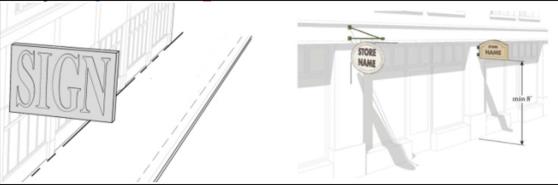
Figure 19.30.020-8 Typical Projecting Sign
“Reader board” means a sign on which the letters are readily replaceable such that the copy can be changed from time to time at will.
“Right-of-way” means land, property or property interest (e.g., easements) usually in a strip acquired for or devoted to transportation.
“Roadway” means the traveled portion of the road along with portions of the shoulder available for vehicular parking.
“Roof signs” means signs erected or constructed wholly upon and over the roof of any building and supported solely on the roof structure. Signs standing out horizontally from a mansard roof are considered wall signs; however, they may not extend vertically above the top of the mansard.
“Rotating sign” means any sign that revolves on a fixed axis.
“Sandwich-board, A-frame” means a portable two-faced A-frame or sandwich-board-style sign, made of rigid materials, which is readily movable and has no permanent attachment to a building, structure or the ground. See Figure 19.30.020-9.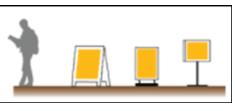
Figure 19.30.020-9 Typical Sandwich-Board/A-Frame Sign and Signs of a Similar Size, Form and Function
“Searchlight” means any apparatus containing an electric light and reflector on a swivel for projecting a far-reaching beam in any desired direction.
“Setback” means the distance from the property line to the nearest part of the applicable building, structure or sign, measured perpendicularly to the property line.
Shopping Center. See the definition of “Business complex.”
“Sight distance triangle” means the sight distance area is a clear-view triangle formed on all intersections by extending two lines of specified length (A) and (B) from the center of the intersecting streets along the centerlines of both streets and connecting those endpoints to form the hypotenuse of the triangle. Specified lengths based on posted speeds and details of the triangle are listed in Section 4.12 of the “City of Buckley Development Guidelines and Public Works Standards.” The area within the triangle is subject to restrictions to maintain a clear view on the intersection approaches.
“Sign” means any structure that has a visual display visible from a public right-of-way or any thoroughfare for public travel, and designed to identify, announce, direct, or inform.
“Sign structure” means any structure which supports or is capable of supporting any sign as defined in this chapter. A sign structure may be a single pole or may or may not be an integral part of a building. Structures which perform a separate use, such as a telephone booth, bus shelter or Goodwill container, shall not be considered a sign structure.
Sign Surface Area.
(a) Freestanding, Ground Signs, or Monument Signs. The area of a freestanding, ground sign, or monument sign shall be determined by measuring the length times the width of a sign panel. The entire sign panel shall be considered when figuring sign area. Only one sign face of a double-sided sign is used to determine sign area. The measurable area shall not include sign structures such as poles, framing, or decorative roofing; provided, that there is no written copy or symbols on the structure or architectural embellishment. See Figure 19.30.020-10.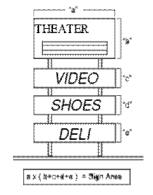
Figure 19.30.020-10 Example Sign Area Calculation
(b) Building or Wall Signs. The entire perimeter of area of the letters, graphics and symbols shall be used to determine sign area. The area measured is the smallest circle, triangle, rectangle, or square that can be drawn around all parts of the visible area. If a painted background contrasts strongly with the wall it is painted on, the entire painted area is considered when determining sign area. If a sign panel is attached in any way to a wall, the entire panel is considered the sign area. See Figure 19.30.020-11.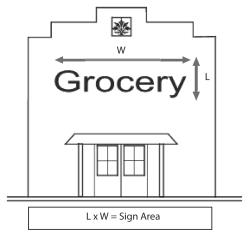
Figure 19.30.020-11 Example Wall Sign Area Calculation
“Street frontage” means the side of a building facing a street which abuts the property on which the building is located.
“Temporary sign” means any sign that is used temporarily, installed for no more than 12 months, and is not permanently mounted, painted or otherwise affixed, excluding portable signs as defined by this chapter, including any poster, banner, placard, stake sign or sign not placed in the ground with concrete or other means to provide permanent support, stability and rot prevention. Temporary signs may only be made of nondurable materials including, but not limited to, paper, corrugated board, flexible, bendable or foldable plastics, foamcore board, vinyl canvas or vinyl mesh products of less than 20-ounce fabric, vinyl canvas and vinyl mesh products without polymeric plasticizers and signs painted or drawn with water soluble paints or chalks. A temporary sign can be made of wood; provided, that it is not posted on a lot or similar division of property for more than 10 months in any 12-month period. Signs made of any other materials shall be considered permanent and are subject to the permanent sign regulations of this chapter.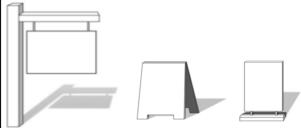
Figure 19.30.020-12 Example Temporary Signs
“Wall sign” means any sign attached to or supported by a wall or window of a building or erected against and parallel to the wall of a building, extending less than 12 inches from that wall. Any sign placed behind glass or within a building and located in such a manner as to have an obvious intent to capture the interest of those outside the building shall be considered a wall sign and shall be treated in the same manner. A permanent illuminated sign located inside and affixed to or within three feet of an exterior window and visible from any public way shall be considered to be a wall sign.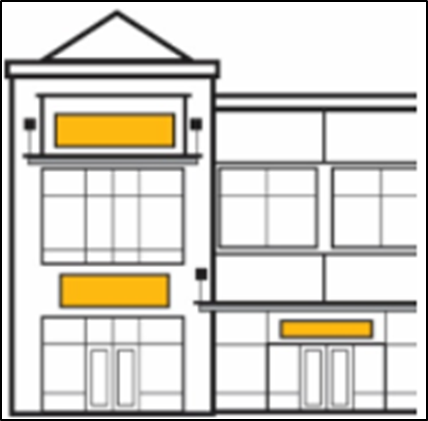
Figure 19.30.020-13 Example Wall Signs
(Ord. 04-23 § 1, 2023).
19.30.030 Applicability.
(1) This chapter applies to all signs as defined in BMC 19.30.020, Definitions.
(2) This chapter is not intended to and shall not be interpreted to restrict noncommercial speech on the basis of its content, viewpoint, or message in violation of the First Amendment.
(3) Any classification of signs in this chapter which purports to permit commercial speech by reason of its content or identity of the sign user, or otherwise, shall be interpreted to allow noncommercial speech on the sign to the extent required by the First Amendment.
(4) No part of this chapter shall be construed to favor commercial speech over noncommercial speech to the extent required by the First Amendment.
(5) To the extent that any provision of this chapter is ambiguous, the term shall be interpreted not to regulate speech on the basis of the content of the message to the extent required by the First Amendment. (Ord. 04-23 § 1, 2023).
19.30.035 Exemptions.
The standards and regulations set forth in this chapter apply to all signs proposed for installation in the city, unless specifically exempted from sign permits as provided below:
(1) Governmental signs, as defined in BMC 19.30.020, installed for the protection of the public health, safety and general welfare, including, but not limited to, the following:
(a) Emergency and warning signs necessary for public safety or civil defense;
(b) Traffic and/or wayfinding signs erected and maintained by an authorized public agency;
(c) Signs required to be displayed by state or federal law;
(d) Any sign placed by or required by a governmental agency when narrowly tailored to carry out its responsibility to protect significant matters of public health and safety;
(2) Privately maintained traffic control signs in a subdivision with private roads;
(3) Permanent noncommercial private signs not exceeding two square feet per sign face, regulating pedestrian and vehicular circulation and parking of a development, such as signs imposing parking restrictions and identifying entrances to parking lots and buildings;
(4) Noncommercial Flags. Commercial flags and banners shall not exceed a total of 20 square feet per lot;
(5) Exterior signs not visible from streets or ways open to the public;
(6) Unlit signs in the interior of a building not visible from the closest window or not facing a window;
(7) Plaques, tablets of metal or stone or inscriptions, which are an integral part of the building structure or are attached flat to the face of the building, which are nonilluminated, and which do not exceed three square feet in surface area;
(8) Incidental signs as defined in BMC 19.30.020;
(9) Sandwich-board signs, mascot uniforms, advertisement clothing worn by a person and/or hand-held signs displayed while walking the public ways of the city;
(10) Bench Signs. Any outdoor bench or furniture with any signs one square foot or less in area;
(11) Noncommercial, incidental signs or nonverbal graphic art on structures or improvements intended for separate use, such as phone booths, donation containers and newspaper recycling boxes;
(12) Permanent incidental signs of no more than three square feet located at the ingress/egress points of a parcel and legible from the right-of-way. Incidental signs located internally within parking lots and not meant to be read from the right-of-way may be up to 12 square feet per sign face;
(13) Vehicle with Signs. Any sign on a currently licensed and operable motor vehicle parked or driven on a roadway, driveway or vehicle parking area, where the primary function of the vehicle is not to display the sign (i.e., delivery vans and trucks or service vehicles);
(14) Nonverbal symbols attached to places of worship;
(15) The normal repair and maintenance of conforming or legal nonconforming signs;
(16) Community service signs;
(17) Sculptures, fountains, mosaics, murals and design features which do not incorporate advertising or identifications. (Ord. 04-23 § 1, 2023).
19.30.040 Public safety considerations.
Sign locations shall take into consideration public safety features such as the clear vision triangle at driveways and at intersections. The clear vision triangle requires that signs in the view triangle be less than three feet tall. A sign shall not be displayed in a manner that would confuse or obstruct the view or interpretation of any official traffic sign, signal, or device. (Ord. 04-23 § 1, 2023).
19.30.050 Prohibited signs.
Except as indicated by this chapter, the following signs or displays are prohibited:
(1) Portable and mobile reader board signs;
(2) Freestanding Pole Signs. Freestanding pole signs are not allowed within the city’s corporate limits except those that are classed as nonconforming pursuant to this title and/or allowed as a temporary sign and regulated pursuant to BMC 19.30.140. Feather flags are not considered freestanding pole signs; nor are multiple-pole freestanding pole signs with landscaping completely obscuring the base;
(3) Signs, other than noncommercial utility warning and identification signs, affixed to utility structures, including utility poles, without the consent of the utility and the city;
(4) Signs which, by reason of their size, location, movement, content, coloring or manner of illumination, may be confused with traffic control signs or signals;
(5) Signs located in the public right-of-way, on or within medians or roundabouts, or on or within other public property or structures except where permitted in this chapter; provided, that no temporary signs permitted under BMC 19.30.140 be located within travel lanes or sidewalks, with the exception for sidewalks of sandwich boards and signs of a similar size, form and function as governed by BMC 19.30.140;
(6) Signs that are animated or moving (rotating, flashing, blinking, chasing or scintillating) either mechanically, by illumination or by electronics; except for changing message center signs as allowed in this chapter;
(7) Displays, flags, posters, pennants, ribbons, streamers, spinners, twirlers or propellers, balloons, searchlights, portable signs, bubble machines or containing elements creating sound or smell, except when exempted in BMC 19.30.035 or allowed as temporary signs pursuant to BMC 19.30.140;
(8) Billboards. No billboard shall be erected, modified or relocated, nor shall the city issue any permits authorizing such signs;
(9) Off-Premises Commercial Signs. Off-premises commercial signs, except for temporary signs located in city right-of-way. Temporary commercial off-premises signs shall meet the restrictions in BMC 19.30.140;
(10) Roof Signs. Roof signs are not allowed within the city’s corporate limits. No roof signs shall be erected, modified or relocated, nor shall the city issue any permits authorizing such signs; and
(11) Signs without proper permit. Signs erected, constructed, or structurally altered that are required to have a permit for such action and that were erected, constructed, or altered without obtaining a permit for such action. (Ord. 04-23 § 1, 2023).
19.30.060 General permit requirements.
(1) Permit – Required.
(a) No sign shall be erected, altered, enlarged, illuminated or relocated, except in accordance with the provisions of this chapter, without a valid sign permit approved by the planning and building departments, unless the sign is exempted from this chapter, or a permit is expressly not required.
(b) No sign permit shall be required for repainting, cleaning or other normal maintenance and repair of a sign, or for sign face and copy changes that do not alter the size or structure of the sign.
(c) Awnings permits shall be issued through sign permits and be installed and maintained consistent with Buckley’s building, sign, and design review codes.
(2) Permit – Application. To obtain a permit required by this chapter, the applicant shall file an application which shall:
(a) Clearly indicate the precise location of the proposed sign;
(b) Be accompanied by adequate plans and specifications. All designs and/or plans shall provide design specifications that meet a wind resistance standard of 90 miles per hour, unless the building official determines that a lesser standard is warranted due to location, design, etc.;
(c) Be signed by the owner and/or authorized agent;
(d) Be accompanied by the applicable permit fee in accordance with the city’s adopted fee schedule; and
(e) Permits issued by the building department shall expire and become null and void if the work as allowed has not begun within 180 days from the date the permit was issued, or if the work authorized by the permit is suspended or abandoned for a period of more than 180 days at any time after the work has begun. (Ord. 04-23 § 1, 2023).
19.30.070 General sign requirements.
(1) Structural Requirements. The structure and erection of signs or flag poles within the city shall be governed by the most recently adopted building code. Compliance with the building code shall be a prerequisite to issuance of a sign permit under this code.
(2) Electrical Requirements. Electrical requirements for signs shall be governed by Chapter 19.28 RCW and WAC 296-46-910.
(3) Design. All signs within design districts shall be designed using materials, colors, lettering and other graphics which comply with the city’s adopted design district design standards.
(4) Maintenance. All signs, including signs heretofore installed, shall be correctly maintained on a continuous basis pursuant to BMC 19.30.170 and 19.30.180.
(5) Landscaping for Ground Signs and Monument Signs. All new monument and ground signs shall include, as part of their design, landscaping about their base so as to prevent vehicles from hitting the sign and to improve the overall appearance of the installation.
(a) Monument and ground signs shall be located in a planting bed of equal area to the area of the sign. The planting bed may be included within any planting strip(s) required under Chapters 17.08 and 19.29 BMC. The minimum dimension of the planting bed shall be five feet measured from border to border or inside face of curb to sidewalk. The planting beds shall be improved with the following:
(i) One gallon groundcover planted 12 inches on center; and
(ii) One shrub per 10 square feet of sign area. Shrubs located within the vision clearance area shall be not taller than 36 inches.
(6) Inspection. All sign users shall permit the periodic inspection of their signs by the city upon city request.
(7) Location. All monument, ground, and temporary freestanding signs must be set back a minimum of five feet from any property lines, or outside the sight triangle established in Section 4.12 of the “City of Buckley Development Guidelines and Public Works Standards,” whichever is greater.
(8) Projecting and awning signs shall not be allowed for uses in the residential zones (R-6,000, R-8,000, R-20,000). In other zones, projecting and awning signs may be used in lieu of or in combination with wall signs, provided:
(a) The signs maintain a minimum clearance of eight feet above finished grade.
(b) The signs do not project more than six feet from the supporting building facade.
(c) The sign or awning shall maintain a minimum setback of one foot from the curb face.
(d) The signs shall not exceed the number or size allowed for projecting signs in a zone district.
(e) The signs do not contain internal illumination. Illumination shall be achieved by indirect means such as ground-supported directional lighting or overhead goose-neck lamps.
(9) Mechanical changing message center signs, which can be wall or monument signs, shall not exceed the size allowed for a wall or monument sign, and shall be allowed only in the general commercial, central commercial and industrial zones (GC, CC and LI). Changing message center signs shall not exceed the maximum sign height allowed in the zone.
(10) Sign Illumination and Glare.
(a) Signs may be internally illuminated in the GC, CC and LI zones. Signs in all other zones may be indirectly illuminated; provided, the light source for indirectly illuminated signs shall be no farther away from the sign than the height of the sign.
(b) Illumination from or upon any sign shall be shaded, shielded, directed or reduced so as to avoid undue brightness, glare or reflection of light on private or public property in the surrounding area, and so as to avoid unreasonably distracting pedestrians or motorists. All illumination must be known as white or yellow. No sign may contain or utilize any of the following (does not apply to neon signage):
(i) Any exposed incandescent lamp with a wattage more than 25 watts.
(ii) Any exposed incandescent lamp with an internal or external reflector.
(iii) Any continuous or sequential flashing device or operation.
(iv) Except for electronic changeable copy signs, any incandescent lamp inside an internally lighted sign.
(v) External light sources directed towards or shining on vehicular or pedestrian traffic or on a street.
(vi) Internally lighted signs using 800-milliamp or larger ballasts if the lamps are spaced closer than 12 inches on center.
(vii) Internally lighted signs using 425-milliamp or larger ballasts if the lamps are spaced closer than six inches on center.
(c) Indirectly illuminated signs shall be arranged so that no direct rays of light are projected from such artificial source into residences or any street right-of-way. Indirect sign light fixtures shall complement the design of the sign and building facades or structures associated with the sign, shall be “full cutoff” to not result in direct illumination of the sky and adjacent properties and structures, and shall be designed to minimize reflected glare to adjacent properties and structures. A site lighting plan which shows the location of light fixtures and demonstrates the light throw in comparison to the surrounding buildings/street right-of-way shall be included as part of the sign permit application for indirectly illuminated signs.
(11) Maximum height for wall signs shall not extend above the highest exterior wall upon which the sign is located.
(12) Signs located within the historic-commercial (HC) district shall conform to BMC 19.50.070, Design criteria, and be subject to planning commission, city council, or designated official review and approval pursuant to BMC 19.30.190.
(13) Temporary signs shall not be subject to design review. Review of sign permits shall be strictly limited to conformance to applicable regulations and shall not be based upon content.
(14) No sign shall be placed so as to cause a visual or physical obstruction to a public right-of-way or pedestrian way.
(15) Where regulations conflict within the ordinance codified in this chapter or with other ordinances, the most stringent or specific regulation shall apply unless conformance to the less stringent regulation is necessary to assure conformance to state and federal constitutional requirements. (Ord. 04-23 § 1, 2023).
19.30.080 Sign area calculation.
(1) The allowable sign area shall be calculated from the building frontage or lot frontage, whichever is greater. The sign, whether a wall, freestanding, ground, or monument sign, must be located on and facing upon the street frontage that determined the allowable sign area.
(2) When a business does not face a street but has an entrance that opens directly to the outside of the building, the business may have one wall sign with the area of the sign based on the business’s portion of the building frontage.
(3) Sign locations on multiple tenant buildings can be determined by the building owner, so long as the total allowed sign area is not exceeded.
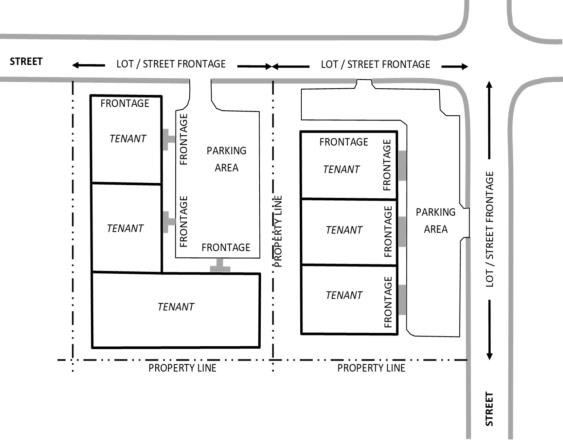
Figure 19.30.080-1 Sign Location for Determining Sign Area
(Ord. 04-23 § 1, 2023).
19.30.090 Historic-commercial district (HC zone).
Signs in the historic-commercial (HC) zone shall be subject to planning commission or city council approval and shall be limited as follows:
(1) A maximum of 50 square feet of total sign-age surface area, which includes wall-mounted, projecting, detached and rear entry, is allowed per building.
(a) Wall signs to include window-mounted signs are allowed up to the 50 square feet sign surface area maximum but cannot cover more than 10 percent of the building facade on which the signs are located.
(b) Projecting signs are allowed up to 10 square feet of sign surface area and shall be framed or bracketed with the appearance and durability of wrought-iron-style trim. Projecting signs shall conform to the general requirements of BMC 19.30.070(8)(a) through (e).
(c) Wall Graphics. The use of exterior walls of buildings for graphics, artwork, or other displays shall be subject to review and approval by the planning commission and approval by the planning commission or city council. Noncommercial wall graphics are exempt from zone-specific dimensional standards while commercial wall graphics are not.
(2) On-premises historic wall signs (as defined in BMC 19.30.020, Definitions) over 50 square feet but less than 2,000 square feet in area are authorized in the historic-commercial district, subject to the following limitations:
(a) One historic wall sign per business is allowed. The historic wall signs shall be within clear view from SR 410.
(b) Buildings upon which historic wall signs may be placed must be more than 50 years old.
(c) Colors shall be as described on page 14 of Buckley Ordinance 11-08.
(d) Fonts should be limited to those identified on pages 40 and 41 of Buckley Ordinance 11-08.
(e) Historic wall signs painted on the sides of buildings shall be allowed in addition to any other sign or sign area authorized by city regulation.
(f) Historic wall signs shall be removed within 30 days of the vacancy of any building upon which they’re located. For multi-tenant buildings, historic wall signs shall be removed within 30 days of the vacancy of the tenant space upon which they are located. (Ord. 04-23 § 1, 2023).
19.30.100 General commercial, central commercial and industrial (GC, CC, LI) zone signs.
Signs in the general commercial (GC), central commercial (CC) and industrial (LI) zones shall be limited as follows:
(1) Building-Mounted Signs. Building-mounted signs are allowed up to one and one-half square feet of sign surface area per lineal foot of building frontage or one-half square foot of sign surface area per lineal foot of lot frontage; however, the maximum area of all building-mounted signage shall not exceed 100 square feet of sign surface area per building.
(a) Within retail or business complexes, individual tenants are allowed one building-mounted sign per building facade facing a right-of-way and/or facing an internal drive area up to a total of 60 square feet of sign surface area in size.
(b) Projecting signs are allowed up to 12 square feet of sign surface area and shall be framed or bracketed with the appearance and durability of wrought-iron-style trim. Projecting signs shall conform to the general requirements of BMC 19.30.070(8)(a) through (e).
(2) Monument Signs.
(a) One double-sided monument sign not exceeding 32 square feet of sign surface area per side is allowed for each street frontage of the lot; provided, corner lots with a street frontage of less than 100 feet on each street shall be allowed only one sign. However, corner lots that have street frontage on at least three sides are allowed a maximum of two monument signs.
(b) Multiple-tenant developments that have more than 300 feet of street frontage, or portion thereof, are allowed to have up to two monument signs. Such signs shall be separated from one another by a minimum of 150 feet, if located on the same street frontage.
(c) On lots where more than one monument sign is allowed, the sign area allowed for individual signs may be combined; provided, the combined sign does not exceed 50 square feet of sign surface area.
(d) The maximum height for single-tenant monument signs shall be eight feet and for multiple tenants 12 feet.
(e) Setback. Monument signs shall be placed no closer than five feet from the edge of the public right-of-way and not in a sight distance triangle. (Ord. 04-23 § 1, 2023).
19.30.110 Neighborhood mixed-use (NMU) and high density residential (HDR) zone signs.
Signs in the neighborhood mixed-use (NMU) and high-density residential (HDR) zones are limited as follows:
(1) Nonresidential Use.
(a) Building-Mounted Signs. Building-mounted signs are allowed up to one and one-half square feet of sign surface area per lineal foot of building frontage or one-half square foot of sign surface area per lineal foot of lot frontage; however, the maximum area of all building-mounted signage shall not exceed 100 square feet of sign surface area per building.
(i) Within retail or business complexes, individual tenants are allowed one building-mounted sign per building facade facing a right-of-way and/or facing an internal drive area up to a total of 60 square feet of sign surface area in size.
(ii) Projecting signs are allowed up to 12 square feet of sign surface area and shall be framed or bracketed with the appearance and durability of wrought-iron-style trim. Projecting signs shall conform to the general requirements of BMC 19.30.070(8)(a) through (e).
(b) Monument Signs.
(i) One double-sided monument sign not exceeding 12 square feet of sign surface area per side is allowed for each street frontage of the lot; provided, corner lots with a street frontage of less than 100 feet on each street shall be allowed only one sign. However, corner lots that have street frontage on at least three sides are allowed a maximum of two monument signs.
(ii) Multiple-tenant developments that have more than 300 feet of street frontage, or portion thereof, are allowed to have up to two monument signs. Such signs shall be separated from one another by a minimum of 150 feet, if located on the same street frontage.
(iii) On lots where more than one monument sign is allowed, the sign area allowed for individual signs may be combined; provided, the combined sign does not exceed 16 square feet of sign surface area.
(iv) The maximum height for single-tenant monument signs shall be six feet and for multiple tenants eight feet.
(v) Setback. Monument signs shall be placed no closer than five feet from the edge of the public right-of- way.
(2) Residential Use.
(a) For subdivisions and properties accommodating more than five dwelling units, two permanent signs located near vehicular access points not exceeding 16 square feet of sign surface area for each sign are allowed per development. The maximum height for the sign shall be six feet. The sign may be monument or mounted on a wall, fence or other structure.
(b) Home occupations as defined in BMC 19.12.245 are limited to one wall sign not exceeding six square feet of sign surface area, consistent with Chapter 19.32 BMC, Home Occupation Standards. Only one such sign shall be allowed on the premises and may be illuminated by indirect lighting only. (Ord. 04-23 § 1, 2023).
19.30.120 Residential (R-6,000, R-8,000, R-20,000) zone signs.
Signs in the residential (R-6,000, R-8,000, R-20,000) zones are limited as follows:
(1) One sign, not exceeding 16 square feet of sign surface area, is allowed within the R-20,000 zone for properties used for commercial agriculture involving on-premises sales of agricultural products. The maximum height for the sign shall be six feet. The sign may be monument or mounted on a wall, fence or other structure.
(2) Approved home occupations as defined in BMC 19.12.245 are limited to one wall sign not exceeding six square feet of sign surface area. Only one such sign shall be allowed on the premises and may be illuminated by indirect lighting only.
(3) Approved conditional uses are limited to one sign not exceeding 16 square feet. The maximum height for the sign shall be five feet. The sign may be monument or mounted on a wall, fence or other structure.
(4) Two permanent residential development identification signs not exceeding 16 square feet of sign surface area for each sign are allowed per subdivision. The maximum height for the sign shall be eight feet. The sign may be monument or mounted on a wall, fence or other structure. (Ord. 04-23 § 1, 2023).
19.30.130 Public facility zone (P) signs.
Signs in the public facility zones (P) shall be limited as follows:
(1) Wall signs are allowed up to 100 square feet in sign surface area; provided, the signs do not total an area more than 10 percent of the building facade on which the signs are located.
(2) Monument Signs.
(a) One double-sided monument sign not exceeding 16 square feet of sign surface area is allowed for each street frontage of the lot occupied by a public facility; provided, corner lots with a street frontage of less than 100 feet on each street shall be allowed only one sign. However, corner lots that have street frontage on at least three sides are allowed a maximum of two monument signs.
(b) Multiple-tenant developments that have more than 300 feet of street frontage, or portion thereof, are allowed to have up to two monument signs. Such signs shall be separated from one another by a minimum of 150 feet, if located on the same street frontage.
(c) On lots where more than one monument sign is allowed, the sign area allowed for individual signs may be combined; provided, the combined sign does not exceed 25 square feet of sign surface area.
(d) The maximum height for monument signs shall be eight feet.
(e) Setback. Monument signs shall be placed no closer than five feet from the edge of the public right-of-way. (Ord. 04-23 § 1, 2023).
19.30.140 Temporary signs.
(1) No Permit Required. No sign permit is required for temporary signs.
(2) Removal. Temporary signs shall be removed if the sign is in need of repair, is worn, dilapidated or creates a public nuisance. Any temporary sign in the right-of-way that is dilapidated or a nuisance shall be removed by the person responsible for placement of the sign.
(3) Location.
(a) Signs in Roadway Prohibited. Temporary signs are prohibited in the roadway.
(b) City Right-of-Way Outside of the Roadway.
(i) Noncommercial temporary signs on city right-of-way placed outside of the roadway are authorized but must comply with the following requirements:
(A) Location. Temporary signs authorized in the right-of-way are allowed only between the property line and the back of the nearest curb or where no curb exists, between the property line and the nearest edge of the roadway. Signs may not obstruct sidewalks, driveways or other paved areas designed for pedestrian or vehicular use, unless otherwise permitted in this chapter as conditioned in a right-of-way use permit.
(B) Number Allowed. Temporary signs on city right-of-way outside the roadway are allowed no more frequently than every 500 linear feet on any contiguous roadway frontage.
(C) Type. Signs on stakes that can be manually pushed or hammered into the ground are allowed. All other signs are prohibited, unless specifically allowed by a right-of-way use permit.
(D) Size and Height. Limited to four square feet, and three feet in height.
(ii) Sandwich Board/A-Board Signs. Sandwich/A-board signs are authorized in commercial and mixed zones as follows:
(A) Location. Sandwich boards, and signs of a similar size, form and function, are permitted in the right-of-way but shall be limited to sidewalks in commercial and mixed-use zones. These signs may not block pedestrian travel. Sandwich board signs must be placed to allow a four-foot clear space for pedestrian travel.
(B) Duration. Sandwich board/A-board signs may only be displayed during business hours.
(C) Limit. One sandwich board sign is allowed per business per street frontage adjacent to the business. Businesses within the historic district lacking direct Main Street frontage may place one off-premises sandwich or A-board sign visible from Main Street with the permission of the adjacent property owner.
(c) City Property Excluding City Right-of-Way. Noncommercial temporary signs on city-owned property are allowed only in conjunction with an approved special event permit. Commercial temporary signs are prohibited on city property excluding the city right-of-way.
(4) Feather flags are permitted as temporary signs but with the following restrictions:
(a) No more than two feather flags shall be permitted per business;
(b) Feather flags may be up for no more than 30 days;
(c) Feather flags shall be separated by at least 18 feet;
(d) Feather flags shall be installed to withstand all potential weather conditions;
(e) Feather flags shall not be placed within the right-of-way.
(5) Residential Zones. Noncommercial temporary signs may be placed on residentially zoned property in accordance with the requirements of this section and the following:
(a) Limit and Duration. Temporary signs are limited to one per adjacent street frontage. Commercial temporary signs are limited to display for a total of 60 continuous days per year or 14 days in any calendar month on a discontinuous basis.
(b) Window Signs. Limited to no more than one temporary window sign per residential unit, not to exceed six square feet.
(c) Freestanding Signs (Includes Post-Mounted, Stake and Portable Signs).
(i) Single-Family Uses. Temporary free-standing signs shall not exceed four square feet in size and five feet in height, if the sign is mounted on the ground, and not to exceed three feet in height if the sign is stake-mounted or portable.
(ii) Multifamily Uses. Temporary free-standing signs shall not exceed six square feet in size and five feet in height if the sign is post mounted on the ground, and not exceed three feet in height if the sign is stake-mounted or portable.
(d) Wall Signs. Limited to sites two acres or larger:
(i) Size. No larger than 32 square feet.
(ii) Location. Must be flatly affixed to walls below the fascia or parapet line, or flatly affixed to on-site fences either facing or abutting the street, or facing inward to the subject site. Signs shall not be attached or tethered to other site improvements.
(6) Nonresidential and Mixed-Use Zones. Temporary signs are allowed on nonresidentially zoned property in accordance with the requirements of this section and the following:
(a) Limit and Duration. Temporary signs are limited to one per adjacent street frontage. Commercial temporary signs are limited to display for a total of 60 continuous days per year or 14 days in any calendar month on a discontinuous basis.
(b) Window Signs. Limited to 25 percent of the window area.
(c) Freestanding Signs (Including Post-Mounted, Stake and Portable Signs) – Size/Height. Limited to six square feet and five feet in height if the temporary sign is mounted in the ground, and not to exceed three feet in height if the temporary sign is portable.
(d) Property owners who elect to use a sandwich/A-board sign governed by subsection (3)(b) of this section shall not be able to add an additional sign under this subsection.
(e) Wall Signs.
(i) Size. Limited to 30 square feet.
(ii) Location. Must be flatly affixed to walls below the fascia or parapet line, or flatly affixed to on-site fences either facing the abutting street, or facing inward to the subject site. Signs shall not be attached or tethered to other site improvements.
(7) Temporary Signs on Large Properties, Residentially or Nonresidentially Zoned. The following temporary signs may be placed on any site at least two acres in size, in accordance with the requirements of this section and the following:
(a) Type. Any type.
(b) Size/Height. Not to exceed 64 square feet and up to eight feet above ground level.
(c) Exclusivity. The sign allowed under this subsection is in lieu of and shall not be displayed with or be in addition to other temporary signs allowed by this section, except for signs placed in and specifically authorized for city right-of-way.
(d) Limit and Duration. Temporary signs are limited to one per adjacent street frontage. Commercial temporary signs are limited to display for a total of 60 continuous days per year or 14 days in any calendar month on a discontinuous basis. (Ord. 04-23 § 1, 2023).
19.30.150 Nonconforming signs.
(1) A sign is legally nonconforming if it is out of conformance with this code, and it was lawfully constructed and installed prior to the date of adoption of this code.
(2) A legal nonconforming sign shall be brought into compliance with this chapter or shall be removed if:
(a) The sign is abandoned;
(b) The sign is damaged in excess of 80 percent of its replacement value, unless such destruction is the result of vandalism or intentional destruction or removal by someone not authorized by the sign owner;
(c) The owner seeks to change the sign structure supporting, holding, or surrounding the sign, other than minor maintenance or repair;
(d) The building to which the sign applies is demolished. (Ord. 04-23 § 1, 2023).
19.30.160 Maintenance and repair of legal nonconforming signs.
(1) Legal nonconforming signs may be removed for cleaning and routine maintenance, i.e., repainting, cleaning, changing of lighting and wiring, and may be replaced without being brought into conformance with the current sign chapter.
(2) Nothing in this section shall relieve the owner or user of a legal nonconforming sign or owner of the property on which such nonconforming sign is located from the provisions of this chapter regarding safety, maintenance and repair of signs; provided, however, that any repainting, cleaning and other normal maintenance or repair of the sign or sign structure shall not modify the sign structure in any way which makes it more nonconforming or the sign may lose its legal nonconforming status.
(3) Changes to content alone shall not affect nonconforming use status, except that such status shall be lost if content is changed from noncommercial to commercial. (Ord. 04-23 § 1, 2023).
19.30.170 Maintenance of signs.
All signs and landscape, including signs heretofore installed, shall be constantly maintained in a state of security, safety, and repair. If any sign is found not to be so maintained or is insecurely fastened or otherwise dangerous as determined by the building official, it shall be the duty of the owner and/or occupant of the premises on which the sign is fastened to repair or remove the sign within five working days after receiving notice from the building official, unless removal is required sooner by the building official for public safety reasons. For damaged or in disrepair signs, it shall be the duty of the owner and/or occupant to repair or remove the sign within 30 calendar days. The premises surrounding a sign shall be free and clear of rubbish and the required landscaping area free of weeds. (Ord. 04-23 § 1, 2023).
19.30.180 Application for design review
(1) An applicant requesting design review approval as provided under the city’s design review districts shall comply with the following requirements:
(a) Applications for design review shall be submitted to the planning director.
(b) All fully completed sign applications with appropriate attachments or diagrams and payment of processing fee(s) must be submitted to the city not less than two weeks, for minor design review, and not less than four weeks, for major design review, prior to the planning commission meeting in which the application will be considered.
(c) The applicant shall make the premises upon which the sign is to be erected available for inspection by the building official.
(2) The city shall advise the applicant as to the date of the planning commission’s consideration of the application or the designated official’s determinations.
(3) The planning commission or, as applicable, city council or designated official, shall consider, and require compliance with, the following factors in reaching a decision on the application:
(a) The sign shall further the purpose of this sign code, as said purpose is set forth in BMC 19.30.010;
(b) The sign shall comply with applicable state, county and city building and fire codes;
(c) All permanent signs must meet the standards set forth in BMC 19.30.060 and 19.30.070. (Ord. 04-23 § 1, 2023).
19.30.190 Appeals from design review or designated official.
Any sign applicant or aggrieved party under this chapter may appeal administrative decisions or decisions of the planning commission to the hearing examiner by filing an appeal and paying adopted appeal fee with the city clerk within 10 working days of the planning commission’s or designated official’s written decision. The appeal shall be on a de novo basis. The hearing examiner shall take action upholding, revising or modifying the planning commission’s or designated official’s decision. (Ord. 04-23 § 1, 2023).
19.30.200 Variances.
The designated official may grant a variance from the provisions of this chapter subject to the variance provisions of BMC 19.40.030. A variance shall also be approved to the extent necessary to secure the First Amendment rights of the applicant. (Ord. 04-23 § 1, 2023).
19.30.210 Planning director’s authority.
The planning director is authorized and directed to be the administrator of this chapter, in consultation with the building official, to make necessary interpretations subject to appeal to the designated official, and the planning director is designated to process all required permits. The planning director is authorized and directed to enforce all provisions of this chapter with the building official’s consultation for consideration of the structural integrity of proposed and existing signs. (Ord. 04-23 § 1, 2023).
19.30.220 Right of entry.
When it is necessary to make an inspection of a sign or business to enforce any of the provisions of this chapter, or when the planning director or building official has reasonable cause to believe that an illegally located sign exists or a condition exists which makes a sign unsafe, the building official may enter the premises or building where the sign is located to perform any duty imposed by this chapter as consistent with applicable law. If the building or premises where the sign is located is occupied, a reasonable effort will be made to locate the owner or other persons having charge or control of the building or premises and request entry.
(1) If such entry is refused, the building official shall have recourse to every remedy provided by law to secure entry, including procurement of a search warrant.
(2) No owner or occupant or any other person having charge, care or control of any building or premises shall fail or neglect, after proper request is made and a warrant is provided, to properly permit entry therein by the building official for the purpose of inspection and examination pursuant to this chapter. (Ord. 04-23 § 1, 2023).
19.30.230 Removal of signs.
(1) Unsafe Signs. If the building official finds that any sign regulated by this chapter is unsafe or not properly secured, he shall give written notice to the named owner of the sign and the named owner of the land on which the sign is erected, who shall remove or repair the sign within a specified time from the date of the notice. If the sign is not removed and repaired, the building official shall revoke the permit issued for such sign, as provided in this chapter, and shall notify the city attorney’s office for appropriate legal action. The building official may cause any sign which he determines to be a source of immediate peril to persons or property to be removed summarily without notice.
(2) A-board and sandwich board signs that are not removed by the end of business hours of each day shall be removed by the city, and a fee shall be charged to the sign owner for the collection of the sign. (Ord. 04-23 § 1, 2023).
19.30.240 Recovery of removed signs.
(1) All signs removed by the city shall be available for recovery by the owner of such sign for a period of two weeks, after which they will be destroyed or donated to some designated organization for recycling.
(2) Recovery of any sign removed by the city shall be subject to payment of a sign recovery fee in accordance with the city’s adopted fee schedule.
(3) The city shall not be responsible for damages or loss during removal or storage. (Ord. 04-23 § 1, 2023).
19.30.250 Enforcement, violations and penalties.
Any person violating or failing to comply with any of the provisions of this chapter shall be subject to the notice requirements, enforcement, violations and/or penalty provisions of Chapter 1.12 BMC. (Ord. 04-23 § 1, 2023).
19.30.260 Appeal from sign code administrative interpretations and decisions.
Sign code administrative interpretations and administrative decisions may be appealed, by applicants or parties of record, in accordance with BMC 20.08.030. (Ord. 04-23 § 1, 2023).
19.30.270 Severability.
If any clause, sentence, paragraph, section or part of this chapter or the application thereof to any person or circumstances shall be adjudged by any court of competent jurisdiction to be invalid, such order or judgment shall be confined in its operation to the controversy in which it was rendered and shall not affect or invalidate the remainder of any part thereof to any other person or circumstances and to this end the provisions of each clause, sentence, paragraph, section or part of this law are hereby declared to be severable. (Ord. 04-23 § 1, 2023).


